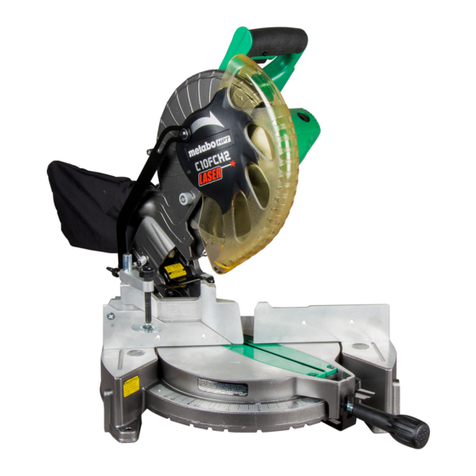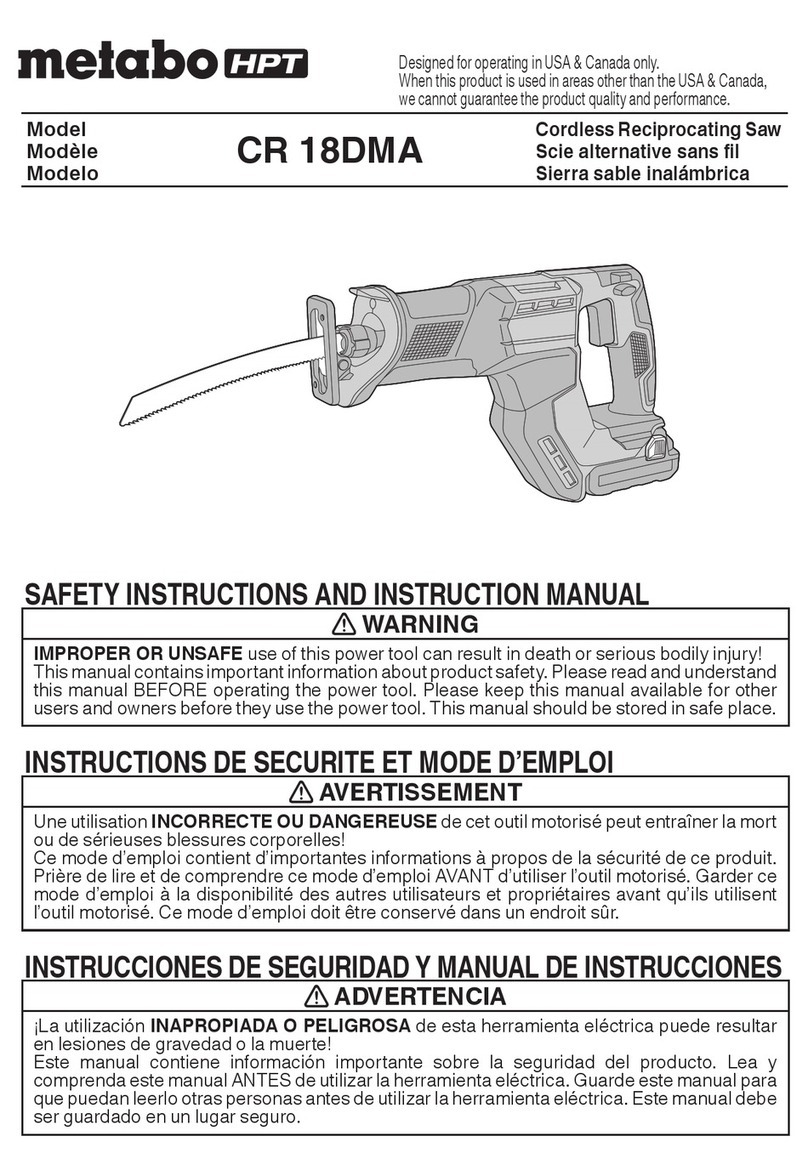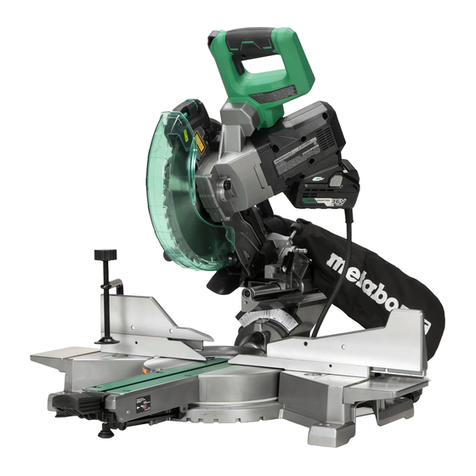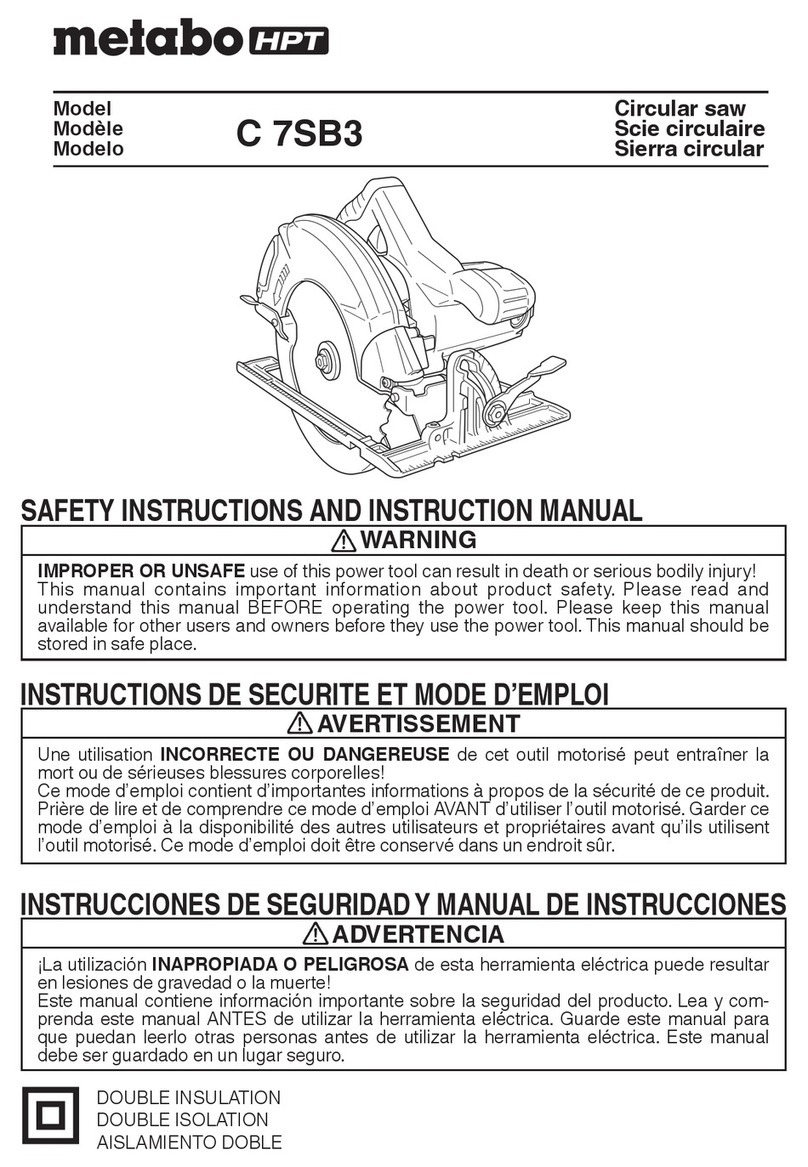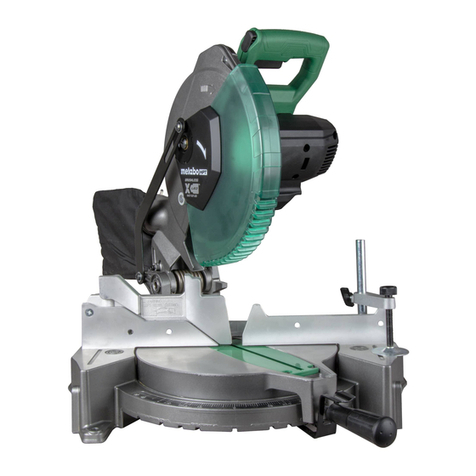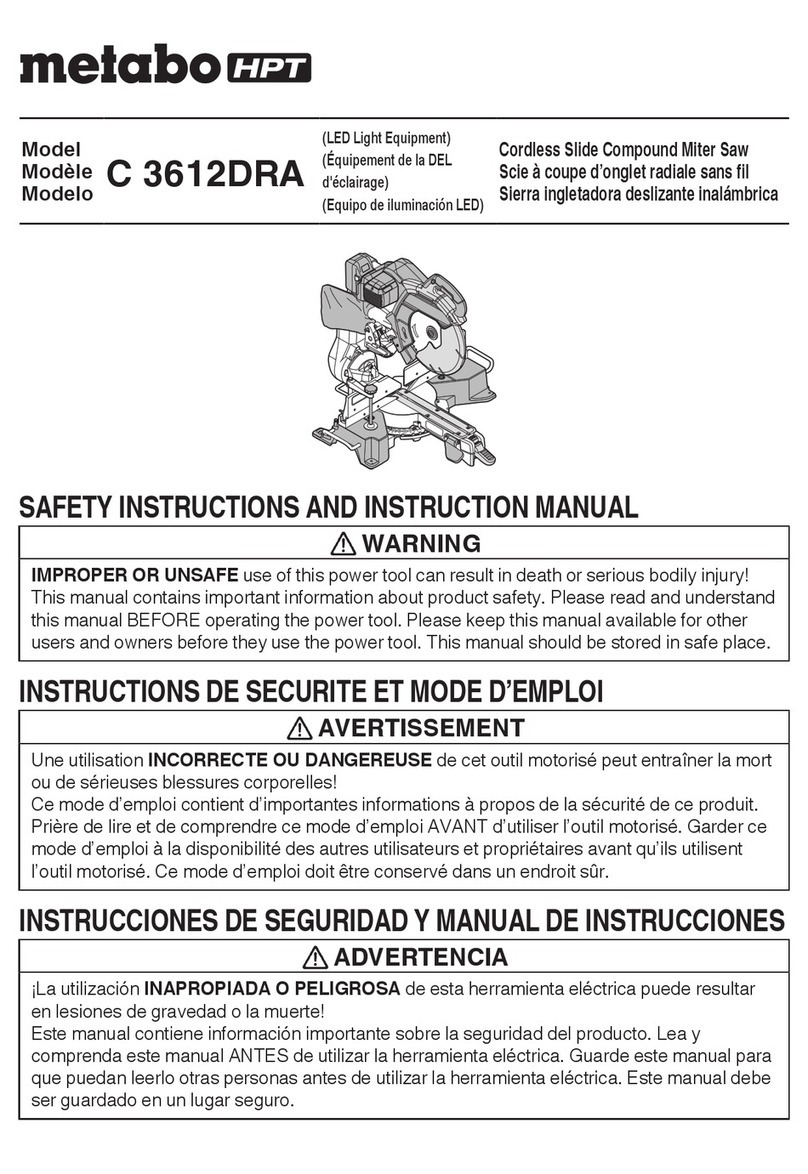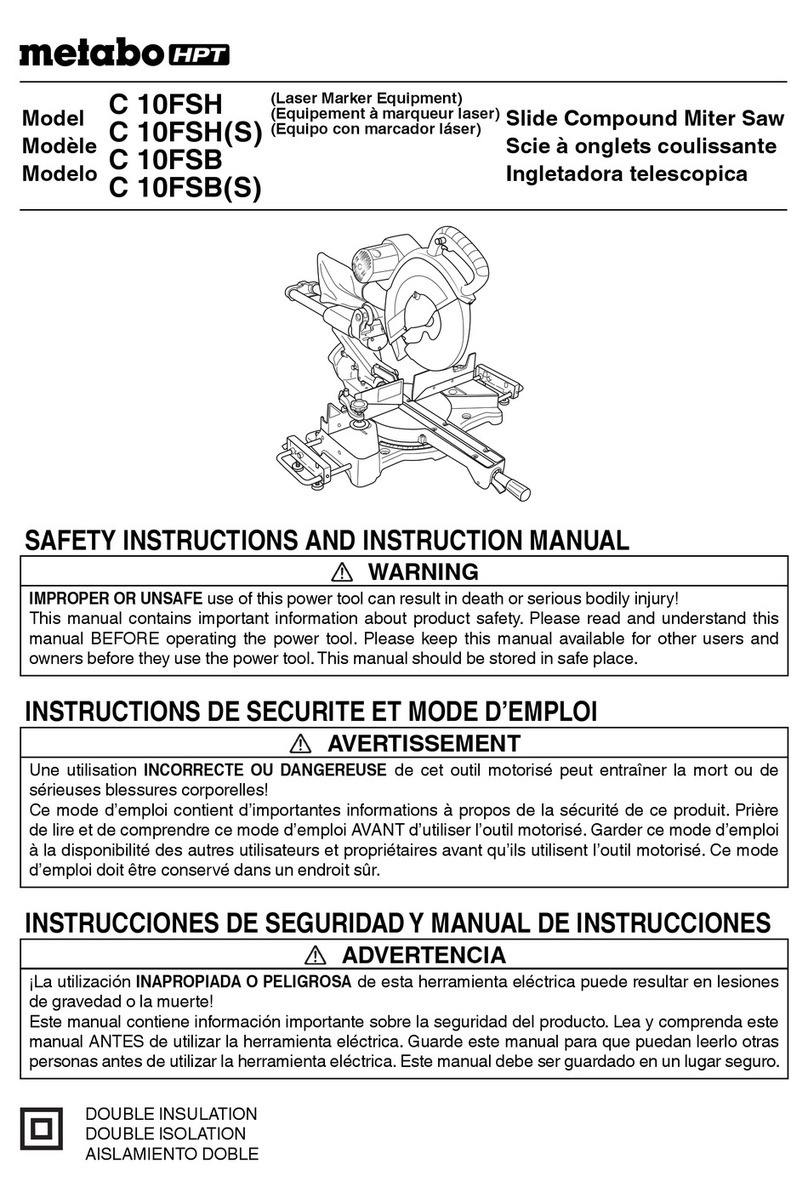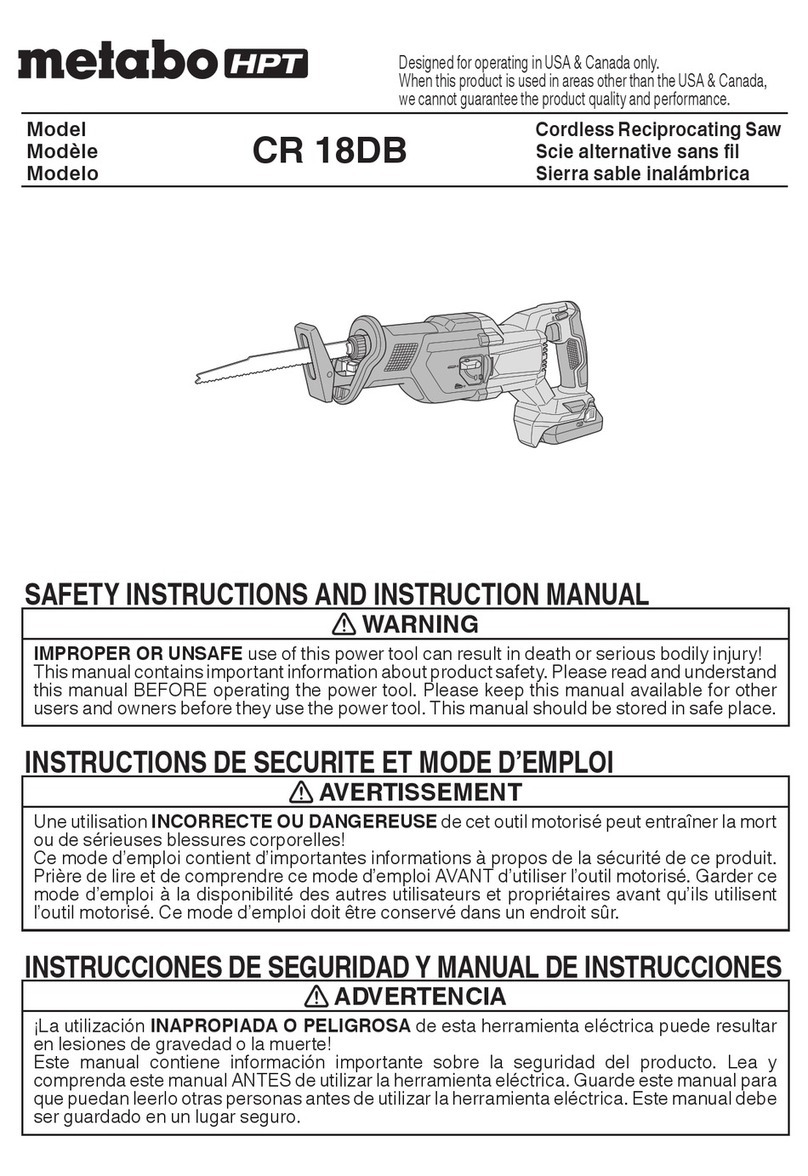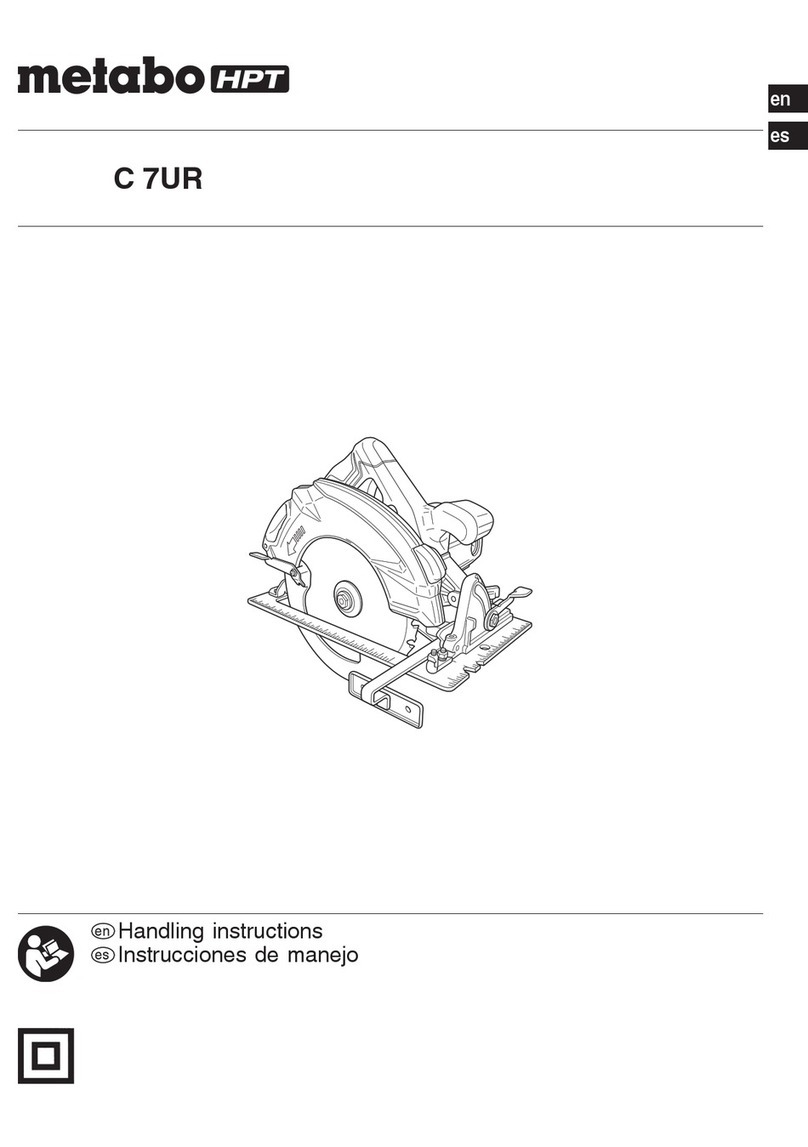
6
English
18. Always confirm that the proper lengths and types of
extension cords are being utilized, if necessary, before
starting the tool.
19. Always confirm that the motor air vents are fully open
before using the tool.
20. Always wait until the motor has reached full speed
before starting a cut.
21. Always keep the handles dry, clean and free of oil and
grease. Hold the tool firmly when in use.
22. Always use outboard stands to provide support for long
workpieces that overhang the table of the compound
miter saw.
23. Always operate the tool after ensuring the workpiece
is fixed properly with a vise assembly.
24. The operating instructions provided with the tool shall
direct the user to secure the tool to supporting structure
if, during normal operation, there is a tendency for the
tool to tip over, slide, or walk on the supporting surface.
25. Ensure before each cut that the machine is stable.
26. If the saw blade should become jammed, switch the
machine offand hold the workpiece until the saw blade
comes to a complete stop. To prevent kickback, the
workpiece may not be moved until after the machine
has come to a complete stop.
Correct the cause for the jamming of the saw blade
before restarting the machine.
27. Use only saw blades that are marked with a maximum
permitted speed equal or higher than the no-load speed
marked on the POWER TOOL.
28. Use only a saw blade diameter in accordance with the
markings on the POWER TOOL.
29. Replace the table insert when worn.
DON’Ts
NEVER VIOLATE THE FOLLOWING RULES TO ASSURE
SAFE USE OF THIS TOOL:
1. Never operate the POWER TOOL unless you fully
understand the operating instructions contained in this
Manual.
2. Never leave the POWER TOOL unattended without
first unplugging the power cord.
3. Never operate the POWER TOOL when you are
tired, after you have taken any medications, or have
consumed any alcoholic beverages.
4. Never use the POWER TOOL for applications not
specified in the instruction manual.
5. Never operate the tool while wearing loose clothing, a
necktie or jewelry, or while your hair is uncovered, to
protect against getting caught in the moving machinery.
6. Never reach around the saw blade.
7. Never touch any moving parts, including the blade,
while the saw is in use.
8. Never remove any safety devices or blade guards; use
of the tool without them would be hazardous.
9. Never lock the lower guard; always confirm that it slides
smoothly before using the tool.
10. Never damage the power cord of the tool.
11. Never attempt to move a plugged-in POWER TOOL
while your finger is on the starting switch.
12. Never use the POWER TOOL if the starting switch does
not turn on and offproperly.
13. Never use the POWER TOOL if the plastic housing or
the handle is cracked or deformed.
14. Never use the POWER TOOL near flammable liquids
or gases because sparking can cause an explosion.
15. Never clean plastic components with solvents because
the plastic may dissolve.
16. Never operate the saw unless all the blade guards are
in place.
17. Never raise the saw blade from the workpiece until it
has first come to a complete stop.
18. Never place your limbs inside of the line next to warning
sign “ ” while the tool is being operated. This may
cause hazardous conditions.
19. Never use abrasive type blades on this saw.
20. Never expose to rain or use in damp locations.
21. Never cut ferrous metals or masonry.
22. Do not replace the LED light with a different type.
23. Do not stand in a line with the saw blade In front of the
machine. Always stand aside of the saw blade. This
protects your body against possible kickback. Keep
hands, fingers and arms away from the rotating saw
blade.
24. Do not cross your arms when operating the tool arm.
WARNING
FOR YOUR OWN SAFETY READ THIS INSTRUCTION
MANUAL BEFORE OPERATING THE COMPOUND
MITER SAW
1. Always wear eye protection when using the compound
miter saw.
2. Always keep hands out of the path of the saw blade.
3. Never operate the saw without the guards in place.
4. Never perform any freehand operation with the
compound miter saw.
5. Never reach around the saw blade.
6. Always turn offtool and wait for saw blade to stop before
moving workpiece or changing settings.
7. Always disconnect power before changing blade or
servicing.
8. Saw blade diameter is 12" (305 mm).
9. No load speed is 4,300 /min.
REPLACEMENT PARTS
When servicing use only identical replacement parts.
Repairs should be conducted only by a metabo HPT
authorized service center.
00BookC12FDHBNANA.indb600BookC12FDHBNANA.indb6 2021/01/2910:32:112021/01/2910:32:11
